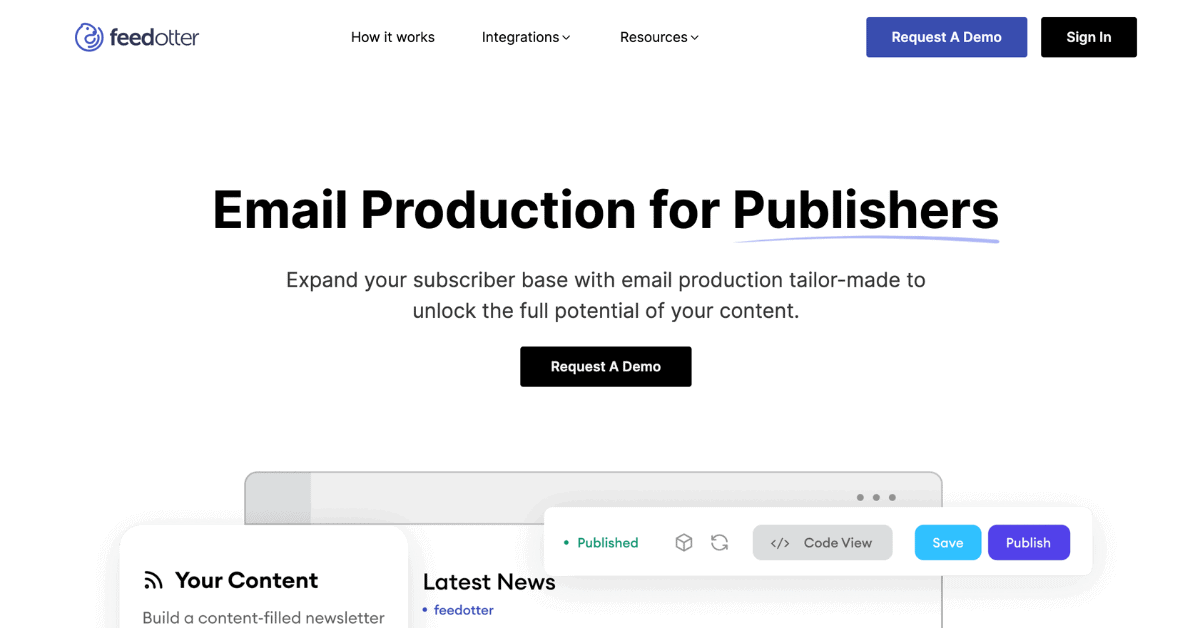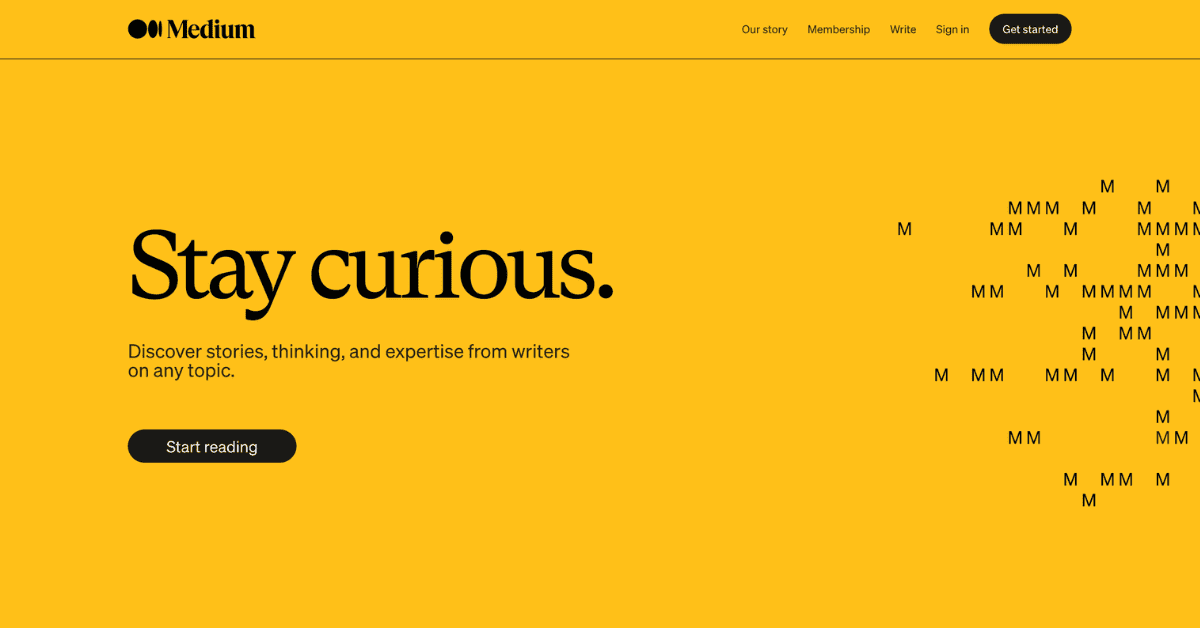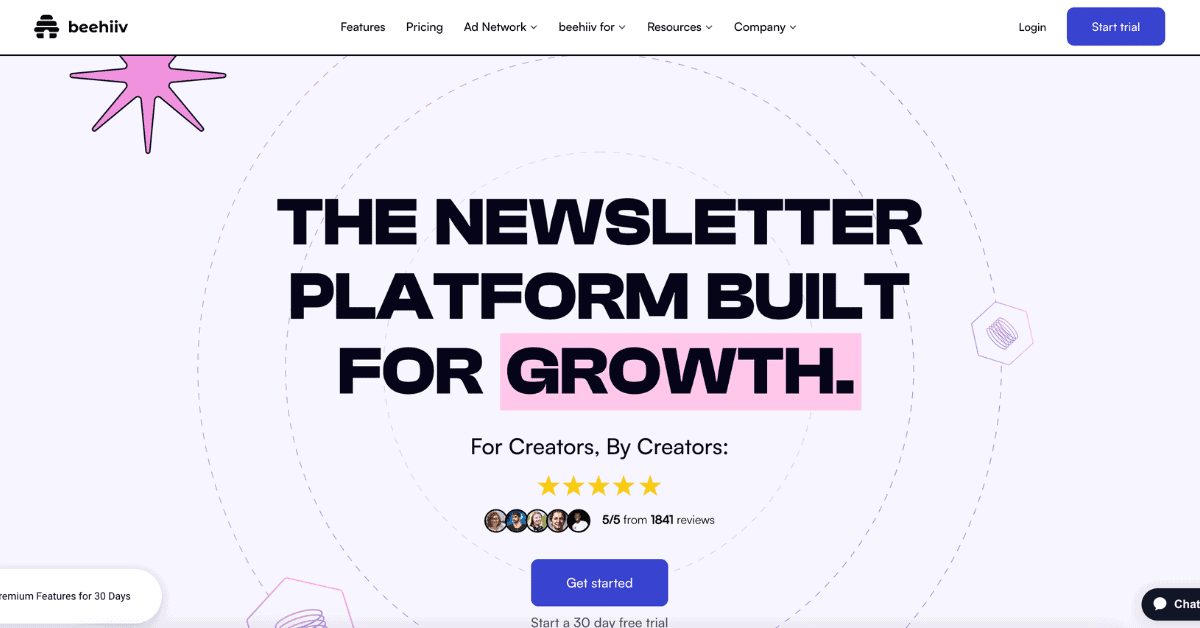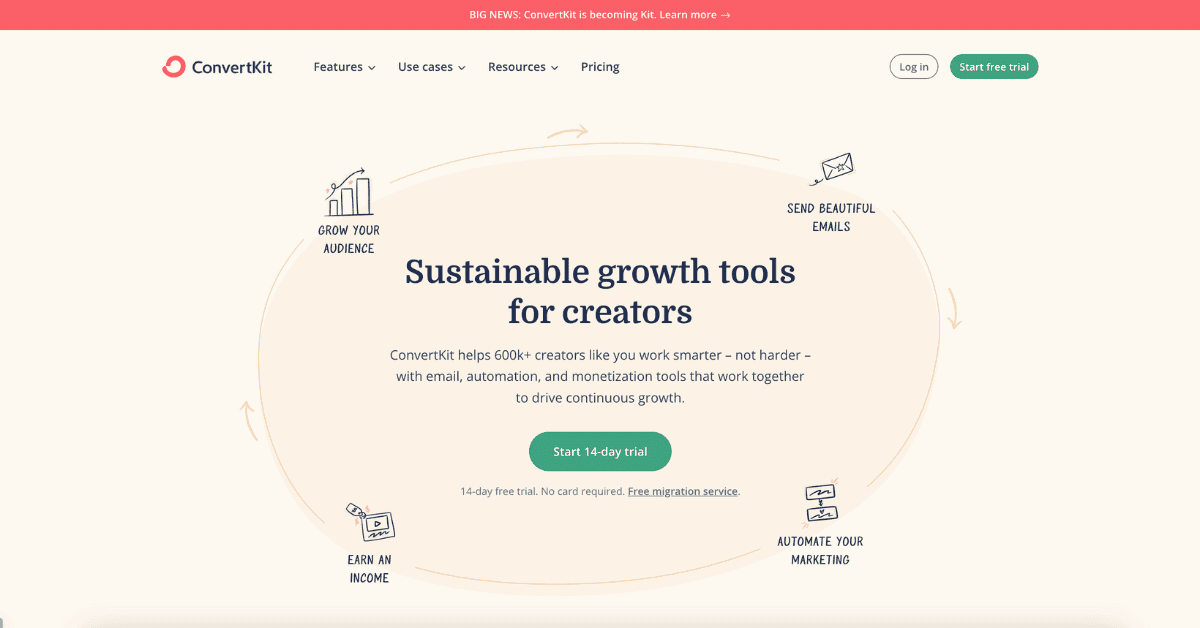Substack Alternatives: Exploring Options for B2B Marketers | FeedOtter

[ad_1]
Substack has gained a reputation as one of the go-to tools for content creators looking to build and monetize their audience. With its user-friendly interface and built-in monetization features, Substack has become synonymous with newsletter publishing.
However, as the digital ecosystem continues to expand, it’s crucial for creators to explore alternatives that offer greater customization, diverse monetization options, and enhanced audience engagement tools.
Today, we’re taking a look at the top Substack alternatives that empower content creators and marketers to grow and monetize their audience.
What is Substack?
Substack is a platform that allows writers and content creators to publish and monetize their content. Launched in 2017, it has quickly become a popular choice for writers, journalists, and creators who want to build a direct relationship with their audience.
Substack offers a straightforward interface for writing blog-like content newsletters, hosting videos and podcasts, as well as a subscription model that allows creators to charge for their content, and built-in analytics to track performance.
Benefits of Using Substack
Whether you’re starting a new content venture or looking to scale an existing one, there are a few key reasons why Substack stands out in the creative community:
- 100% free to use, no matter how many posts you publish or how big your following becomes.
- Built-in monetization, that allows you to keep 90% of the revenue from your subscribers
- Podcast hosting (which can also be monetized)
- Automated email notifications, which send out to your subscribers as soon as you publish a new post.
- Clear metrics, so you can see how many subscribers you have, how people engage with your content, etc.
Why Look for Substack Alternatives?
There is no such thing as a one-size-fits-all tech solution, and Substack is no exception to this rule.
While Substack is a powerful tool, B2B marketers might need additional flexibility and more advanced features. Whether it’s more robust automation capabilities, advanced design customization, or better integration with existing tools, exploring alternatives can provide solutions tailored to specific needs.
Here are a few current challenges that serious marketers face when using Substack to build, grow, and monetize an audience:
- No SEO value: Since your Substack content exists on a different URL than your website, you are effectively ensuring that web traffic is funneled away from your website URL.
- Email limitations: With Substack, you don’t have control over any of your emails. All your subscribers receive is a simple notification email. If you want to customize the content of the email—or send additional emails to promote your content—you’ll have to look elsewhere.
- List management: If you already use an ESP, adding Substack to the mix can make it tricky to properly manage your list of subscribers. If someone unsubscribes from Substack, for example, there’s no easy way to ensure that they’re also unsubscribed from your list on Hubspot, Mailchimp, or whichever platform you’re on.
- Costs increase with your success: Substack currently charges 10% per sale, which might be justified when you consider that you’re saving the cost of website hosting and an ESP subscription…until your monetization efforts start paying off. Creators who are bringing in $5K, or $50K, however, will see their Substack cost rising to $500 or $5K/month…without any additional features that other platforms can offer.
4 of the Best Substack Alternatives
1. FeedOtter

Best For: Professional marketers who want a better newsletter curation and automation tool, without having to host their content on an external site or manage multiple email lists.
Overview: FeedOtter is a web-based tool that helps marketers and content creators to automate and scale their email newsletter strategy.
With FeedOtter, you can create a Substack-like email that’s triggered by one or more RSS-feeds, so you know your subscribers are receiving notifications every time you publish your blog post. Since FeedOtter specifically addresses the email curation and automation side of amplifying your content, you are able to continue posting content on your own site for optimal visibility.
FeedOtter includes tools to scale your newsletters with FeedOtter, since it includes content curation tools that help teams to easily review and add relevant content to your email newsletters, whether the content comes from a blog, a website page, or even your TikTok account.
FeedOtter is designed to integrate seamlessly with top email marketing automation platforms, giving you the ultimate combination of content curating and automation—without losing access to the email metrics you need in your ESP.
Key Features:
- RSS-to-Email Automation: Automatically generates email newsletters from your blog’s RSS feed.
- Integration: Works well with HubSpot, Marketo, Pardot, Eloqua, MailChimp, and Salesforce Marketing Cloud.
- Customization: Offers customizable templates and layout options.
- Multiple Content Sources: Choose content for your emails from RSS feeds, curated pages, TikTok, Google Sheets, and more.
2. Medium

Best For: Writers looking to create long-form content while leveraging a built-in audience, without needing advanced customization.
Overview: Medium is a well-known platform for publishing and sharing content. It provides a built-in audience and community, which can be a significant advantage for writers looking to expand their reach.
The platform supports long-form content and encourages in-depth articles, allowing businesses to showcase thought leadership, share industry insights, and build credibility.
If you have high engagement on your posts (indicated through metrics like reads, claps, comments, and highlights), you might consider enrolling in the Partner Program, which provides monetization for high-performing content pieces.
Key Features:
- Built-in Audience: Access to Medium’s large and active user base.
- Monetization: Medium’s Partner Program allows writers to earn money based on engagement.
- Simple Publishing Tools: Easy-to-use editor and content management tools.
- Discoverability: High potential for content to be discovered through Medium’s recommendation algorithms.
3. Beehiiv

Best For: Creators seeking a balance between customization, monetization, and user-friendly design.
Overview: Beehiiv is a relatively new but rapidly growing newsletter platform that emphasizes customization and user experience.
At a first glance, you’ll notice a lot of similarities between Beehiiv and Substack: they both allow you to create and host your content on their platform, pinging subscribers with an email whenever a new post goes live.
On a more detailed level, Beehiiv offers more SEO optimization options as well as a “recommended” feature that helps other relevant readers to discover your content. They also allow you the flexibility to apply your own brand to landing pages (essentially sign up pages) so that you can promote and collect leads from day one.
Beehiiv does have a free plan that extends up to 2500 subscribers. Paid plans start at $39.20/month for more subscribers and/or additional features like premium subscriptions and email automations.
Key Features:
- Customizable Templates: Offers a wide range of designs that can be easily customized.
- Monetization Options: Allows both free and paid subscriptions.
- Advanced Analytics: Provides detailed insights into reader behavior and engagement.
- Growth Tools: Features designed to help grow your subscriber list, such as referral programs.
4. ConvertKit

Best For: Creators looking for a platform that combines email marketing with audience management and monetization features.
Overview: ConvertKit is a robust email marketing platform specifically designed for creators, offering comprehensive tools to help them grow and monetize their audience.
One of ConvertKit’s top features for anyone looking for a Substack alternative is its ability to create and manage monetized newsletters, allowing creators to charge for their content through paid subscriptions. This feature is seamlessly integrated into the platform, making it easy to set up, manage, and track recurring revenue from newsletter subscribers.
Users of ConvertKit cite increased deliverability (as opposed to Substack), as well as more robust analytics to help you understand exactly what’s working with your content—and where you can improve it.
Key Features:
- Subscriber Management: Advanced tools for managing and segmenting subscribers.
- Automation: Powerful automation features for targeted email campaigns.
- Customizable Forms: Easy-to-create forms for capturing leads.
- Monetization: Built-in tools for selling digital products and subscriptions.
Summary
There are so many great platforms out there for building, scaling, and monetizing an audience. For businesses—or creators looking to scale their work—the tools that support self-hosted content (like FeedOtter and ConvertKit) will likely stand out.
On the other hand, solo creators who prefer to focus on the content itself might be drawn to simpler platforms like Beehiiv or Medium.
In either case, take time to review your options—and best of luck as you grow and scale your audience.
[ad_2]
Source link


